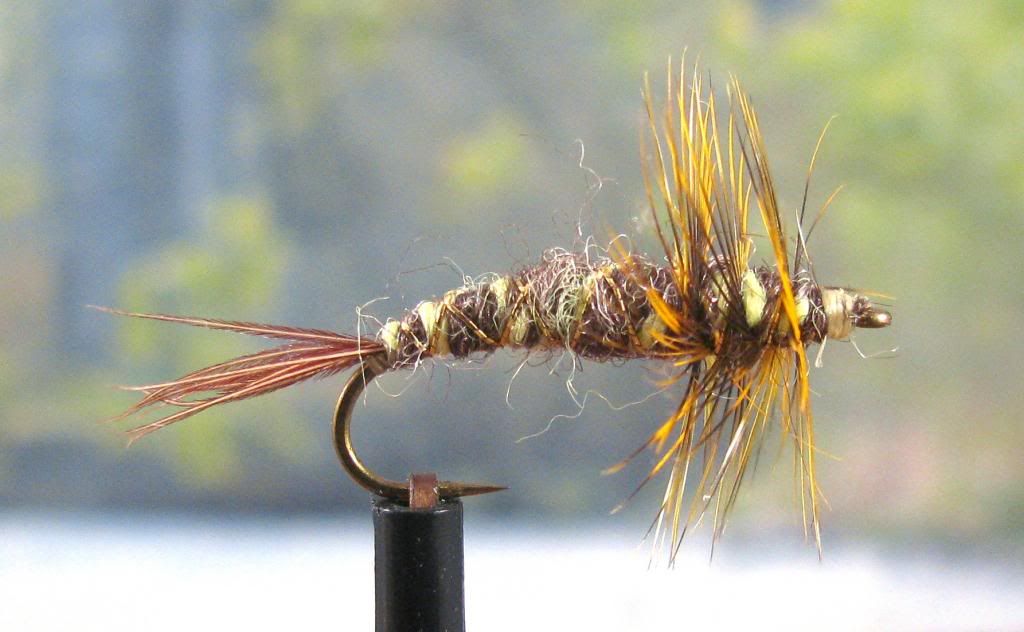William, thanks for the comment. I think a western trip is now unavoidable.
Ruard,
Yours is a beautiful tie, and great addition to this string.
Your ribbing texture is a good way to suggest the pattern on the nymph's back.
I should have chosen a pattern that is more likely to catch fish when we are in Roscoe. These big nymphs live in our streams, but they are not numerous, and are most active at night. However, they are active all year long, and the nymphs are sometimes drifting near the bottom during twilight, morning and evening. As William says, it is primarily thought of as a western fly, but that doesn't mean it can't catch fish in the east. I wonder how many anglers have actually given it a try? Thomas Ames in his book FISHBUGS: THE AQUATIC INSECTS OF AN EASTERN FLY FISHER, describes successful use of the pattern in central New Hampshire, which is similar to the Catskills. Ames writes this:
I think of the the Perlid larva as the alligators of the stream, predatory insects that use their stealth and surprising speed to ambush other insects and even small fish.
All Plecoptera are sensitive to oxygen content as well as water purity. A health golden stonefly population is a sign of a healthy stream."
Lance

